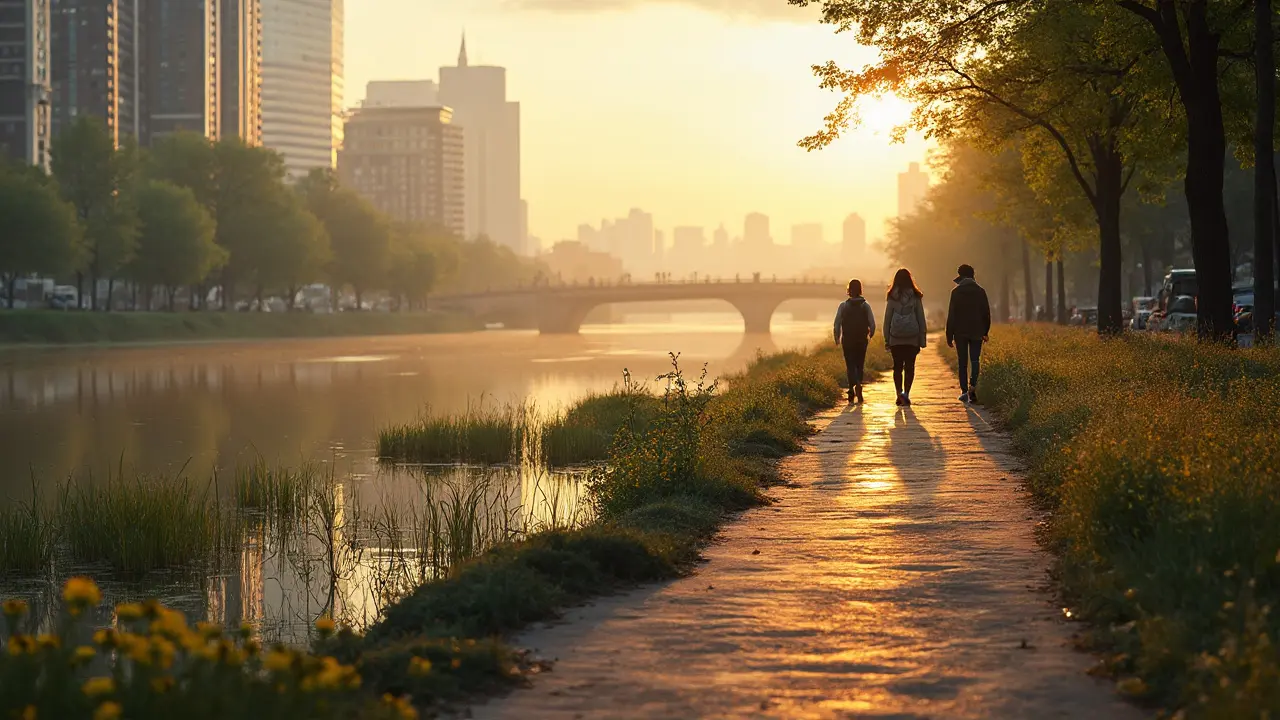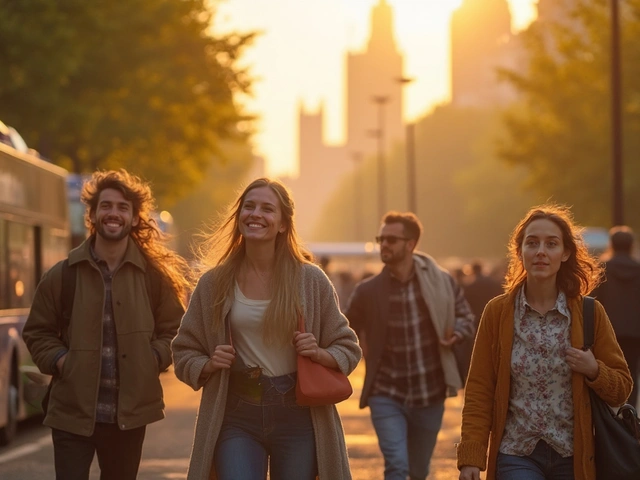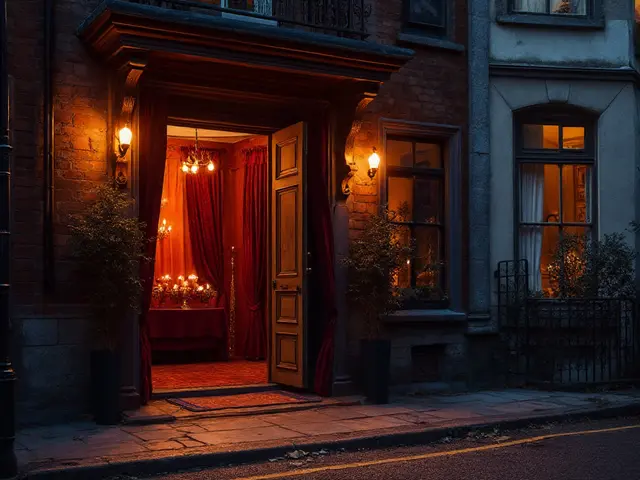Forget the endless train rides up north just to get your dose of nature—London has its own treasure trove of landmarks that’ll blow away anyone who loves the outdoors. Most locals rush through the week hardly noticing the wild spots scattered all over the city, but if you know where to look, there’s a ton to discover—no need for an epic road trip.
The best part? You can actually swap your Saturday lie-in for a morning kayak down the Lea, or spot deer roaming Richmond Park’s ancient grasslands—all within the city limits. Tempted by more dramatic views? Fancy a Sunday hike overlooking chalk cliffs? It’s easier than you’d think to hop on a train from Waterloo or Victoria and have your boots muddy by lunchtime.
If you’ve spent years in London thinking green spaces stop at Hyde Park, you’re in for a surprise. With fast connections and plenty of bike-friendly routes, getting out isn’t just for hardcore hikers. From wetlands breathing life into E17 to bluebell woods near Croydon, I’ll walk you through the spots that locals visit when they need a break from sirens and spreadsheets—plus real tips on how to make it work for you. Ready for a change of scenery? Let’s get you out there.
- Urban Nature Escapes Right in London
- Day Trips to Iconic Natural Wonders
- Secret Spots for Wildlife Watching
- Family-Friendly Nature Walks and Trails
- Best Times and Tricks for Visiting
Urban Nature Escapes Right in London
Most Londoners underestimate just how wild the city gets beyond the obvious parks. If you need a quick breather from city life, these spots offer real nature without leaving the Tube map.
London landmarks for nature lovers don’t stop at Regent’s Park. Hampstead Heath, spread over 800 acres, isn’t just for picnics—check out Parliament Hill for views of the skyline, or take a plunge in the mixed bathing pond (yes, all year round—locals swear by it). Early mornings are best if you want the place to yourself, especially on weekends.
If you haven’t been, the Walthamstow Wetlands deserves a spot on your weekend list. It’s Europe’s biggest urban wetland, home to herons, kestrels, and even otters. The visitor centre serves a solid coffee and you can walk or cycle paths through marshes that feel miles from any city noise. Dogs on leads are welcome, so this is a hit with London’s dog walkers.
Down south, the ancient woodlands of Sydenham Hill Wood offer a genuinely wild feel—think fallen logs, bluebells in spring, and winding paths. It’s also got the remains of a Victorian railway, which adds a bit of urban explorer vibes to your stroll. The wood links up with the Green Chain Walk for those who want to keep walking further.
For iconic urban wildlife, head over to Richmond Park. It’s the biggest of all Royal Parks, covering 2,500 acres, and famous for hundreds of free-roaming red and fallow deer. The Isabella Plantation inside is perfect for a spring visit, when the rhododendrons take over. Just remember, keep a good distance from the deer, especially in May and during autumn rutting season.
If you’ve got limited time, try the Camley Street Natural Park behind King’s Cross. It’s tiny—just under an acre—but it’s packed with wildflowers, pond life, and often with kids on school field trips. You’ll walk in from roaring traffic and just hear birdsong. Perfect spot for a lunch break if you work nearby.
How far are these escapes from central London? Here’s a quick breakdown on travel and facilities:
| Spot | Nearest Tube/Train | Time from Central | Facilities |
|---|---|---|---|
| Hampstead Heath | Hampstead, Gospel Oak | ~20 min | Ponds, café, toilets |
| Walthamstow Wetlands | Blackhorse Road | ~25 min | Visitor centre, toilets, café |
| Sydenham Hill Wood | Sydenham Hill | ~25 min | Walking trails, signboards |
| Richmond Park | Richmond | ~30 min | Cafés, bike hire, toilets |
| Camley Street Natural Park | King's Cross | ~5 min walk | Café, toilets |
Most of these places are easy to reach by TfL and, except for swimming in Hampstead ponds, they’re free. If you want crowds, go on sunny afternoons. For solitude and the best wildlife, hit them early or on a weekday. Grab a reusable coffee cup, pack some snacks, and leave the city behind—without actually leaving it.
Day Trips to Iconic Natural Wonders
London makes it dead easy to visit some seriously epic nature spots without messing up your weekend plans. You can leave in the morning, get your fill of fresh air, and be back home before that evening pint. The smartest move? Use those brilliant direct train routes out of the city. Let’s get specific about the big-hitters for London landmarks that blow city parks out of the water.
Most folks know about Richmond Park, but you can go much bigger with just a short journey:
- Seven Sisters Cliffs: Hop on the train to Seaford or Eastbourne (about 90 minutes from Victoria Station). These cliffs are proper iconic, with those crisp white faces, wild breezes, and crazy Instagram views. The classic walk runs from Seaford to Eastbourne—bring a windproof jacket, the weather flips quick.
- Box Hill: Less than an hour from Waterloo, this place is famous for its rolling hills and knockout views across the Surrey countryside. Box Hill’s stepping stones trail is family-friendly, and there’s a National Trust café for post-walk snacks. Bikes are welcome, but expect a steep bit if you pedal up the Zig Zag Road.
- Windsor Great Park: Twenty minutes from Paddington to Windsor, then enjoy 4,800 acres of woods, gardens, and the famous Long Walk. Often overlooked by tourists glued to the castle, locals know summer is best for picnics under the massive oaks and deer watching near the Copper Horse.
- Epping Forest: On the Overground to Chingford, this ancient woodland mixes wild history with great cycling and walking routes. Fun fact—Queen Elizabeth I did her own hunting here. Main trails are well marked, but the real gem is wandering off-track for a bit of forest magic.
Here’s a quick look at how long it actually takes to swap the city for nature:
| Landmark | Closest Station | Travel Time (from central London) | Best Activity |
|---|---|---|---|
| Seven Sisters Cliffs | Seaford/Eastbourne | 90 min | Coastal hiking |
| Box Hill | Box Hill & Westhumble | 50 min | Hiking, cycling |
| Windsor Great Park | Windsor & Eton Central | 20 min | Picnics, deer spotting |
| Epping Forest | Chingford | 30 min | Walking, cycling |
Don’t forget—Oyster cards and contactless often work outside London zones, but check fares before you set off. Food-wise, grab something at Borough Market or Pret for the train, though Seaford’s seaside chippy and the Windsor Guildhall Market are local favourites if you want to eat after exploring. And if you’re a National Trust or English Heritage member, bring that card for free or discounted entry where it applies.

Secret Spots for Wildlife Watching
Think London’s all pigeons and foxes? There’s so much more to spot if you know where to look. Tucked around the city are real gems for wildlife lovers, and some of these go under the radar even for people who’ve lived here for years.
Head straight to the London Wetland Centre in Barnes for a proper wildlife fix without leaving Zone 3. It’s basically a 105-acre nature reserve built on old Thames waterworks, and it’s now home to over 180 bird species—kingfishers, bitterns, and sand martins show up in spring. Early morning is golden: you’ll dodge crowds and catch rare birds before brunch in Hammersmith.
If you want a wilder feel, try Hampstead Heath. The woodlands and ponds aren’t just for wild swimming—if you’re quiet, you might spot bats at dusk and grass snakes by the ponds in late summer. Make sure you check out Parliament Hill for the city skyline, but duck down into the Vale of Health for dragonflies and newts.
Deer spotting? Forget Richmond Park for a sec and try Syon Park. It’s smaller but gets less selfie crowd traffic, and the herds are easy to spot near the Great Conservatory. Mornings are best; bring binoculars, and check the events calendar for nocturnal bat walks.
For something different, the Waterworks Nature Reserve in Leyton is an insider’s tip. It’s less visited than other spots, but you’ll find herons, little grebes, and reed warblers, plus special bird hides if you want cover on a rainy day. Remember, portable birdwatching guides from RSPB shops can be handy for beginners.
If you’re happy to travel outside the centre, Rainham Marshes (just down the line from Fenchurch Street station) bring in plenty of hardcore twitchers every spring. Marsh harriers and bearded tits love the place, plus there are family-friendly trails and good accessible paths.
| Wildlife Spot | Main Species | Best Time to Visit | Entry/Access |
|---|---|---|---|
| London Wetland Centre | Kingfishers, Sand Martins, Bitterns | Early Spring Mornings | Paid, Accessible |
| Hampstead Heath | Bats, Grass Snakes, Dragonflies | Summer Evenings/Mornings | Free, Some paths muddy |
| Syon Park | Deer, Herons, Bats | Morning, Early Evening | Paid, Accessible Events |
| Waterworks Nature Reserve | Herons, Reed Warblers | March–August Daytime | Free, Quiet |
| Rainham Marshes | Marsh Harriers, Bearded Tits | Spring/Summer, Day | Paid, Good for Families |
Always bring some snacks, a decent zoom lens if you want close-ups, and remember lots of nature reserves offer free binocular hire—just ask at the visitor centre. And if you spot something unusual, most places love it when people report sightings. Getting to see a rare bird or spot a group of deer before the world wakes up? That’s the real London bragging right there.
Family-Friendly Nature Walks and Trails
If you’re hunting for a day out with kids (or you just want a low-key walk that won’t leave anyone begging for a piggyback), London has loads of nature walks that everyone can handle. These aren’t the sort of hikes that need special kit—think pushchairs, scooters, even ice creams with a view.
Try the Richmond Park Tamsin Trail. The loop is about 7.35 miles, but don’t worry, you don’t have to do the whole thing. You’ll spot free-roaming deer and see London’s skyline popping up in the distance. There are toilets and cafes like Pembroke Lodge for a quick refuel, plus loads of space for a picnic. And yes, bikes are allowed.
For something less wild but just as scenic, check out the Wetland Centre in Barnes. You pay to enter, but the boardwalks and lakes are perfect for spotting ducks and even rare kingfishers. Kids’ Explorer Backpacks are free, and they run pond-dipping events most weekends. It’s all accessible for prams and wheelchairs.
Hampstead Heath is another classic. Start at Parliament Hill for the view, then wind down to the ponds or play in the woods. Handy tip: Most playgrounds have coffee nearby, and Kenwood House has loos and cake. The woodlands are brilliant for a game of hide-and-seek.
- Wimbledon Common Windmill Trail: A favourite for little explorers, especially with a windmill stop and a natural play area at the far end. Dogs are welcome, and there’s a café by the car park.
- Regent’s Canal Towpath: If you want something step-free, the stretch between Little Venice and Camden is great for a gentle stroll and even has duck feeding stops. Bring snacks—kids love the passing boats and floating cafés.
No car? Don’t stress. Most of these walks are easy by Tube, Overground, or bus, and most have toilets either on-site or a café close by.
| Trail Name | Nearest Station | Pram-Friendly? | Facilities |
|---|---|---|---|
| Richmond Park Tamsin Trail | Richmond (District Line) | Yes | Cafés, Toilets, Cycling |
| London Wetland Centre | Barnes (National Rail) | Yes | Café, Toilets, Activities |
| Hampstead Heath | Gospel Oak, Hampstead Heath (Overground) | Partial | Cafés, Toilets, Playgrounds |
| Wimbledon Common | Wimbledon (District Line/Tramlink) | Partial | Café, Toilets, Windmill Museum |
| Regent’s Canal Towpath | Warwick Avenue (Bakerloo Line) | Yes | Cafés, Benches, Birds |
Don’t forget: weekends can get busy, especially around playgrounds. Go early or try a weekday afternoon if you want space to roam. Always take water, plasters, and at least one snack—or risk spending your afternoon negotiating with a hangry six-year-old.

Best Times and Tricks for Visiting
Timing makes all the difference when checking out London's wild side or hitting famous green spots nearby. Crowds, weather, and even the animals you’ll see change depending on the season. So here's what you need to know to beat the queues and get the best photos for your feed.
London landmarks like Richmond Park and Kew Gardens get packed on sunny weekends, especially during school holidays and bank holiday Mondays. If you’re after peace and space, hit up these places just after opening (usually around 7–8am) or try a weekday visit. For sunrise views or deer spotting in Richmond Park, set your alarm early—locals know that deer are bolder when there’s fewer people around.
Some spots shine in certain seasons. Bluebell woods, like those in Hatchlands Park, burst into violet from late April to early May—blink and you’ll miss it. For flaming autumn colours in Epping Forest, target late October. Early summer, usually June, is when the London Wetland Centre comes alive with baby birds and wildflowers.
Check out this quick look at local tips by season:
| Season | Landmark | Why Go? | Tip |
|---|---|---|---|
| Spring | City’s bluebell woods | Peak bloom, cool weather | Arrive before 10am for free parking and crowd-free trails |
| Summer | London Wetland Centre | Baby birds, flowers, boat hire | Book tickets online—last slots after 3pm are usually quieter |
| Autumn | Epping Forest | Leaf colour, fungi hunts | Rain boots make wandering trails easier |
| Winter | Richmond Park | Frosty mornings, rutting deer | Bring a flask—no cafés open before 9am |
Want to dodge the crowds? Use TfL’s journey planner to spot quieter train or tube times. Many parks are close to cycling routes like the Thames Path—grab a Santander Cycle if you don’t own a bike. Take snacks since café queues go wild by midday, especially on sunny weekends.
Weather’s a gamble in London, but waterproofs and an extra layer go a long way. If you’re heading to the coast or high ground, check National Rail for any weekend works—delays happen more often than you’d think. And if you're into wildlife, bring binoculars. Both RSPB Rainham Marshes and the London Wetland Centre rent them out if you forget yours.
Final trick? Download park or forest maps before you go—signal drops out fast in the woods outside town. And if you’re after those Instagram-magnet shots, remember golden hour’s best around 7–8pm in summer, but much earlier in winter. Don’t forget, some green spaces close at dusk or require advance booking, so always check on their website before you head out.





